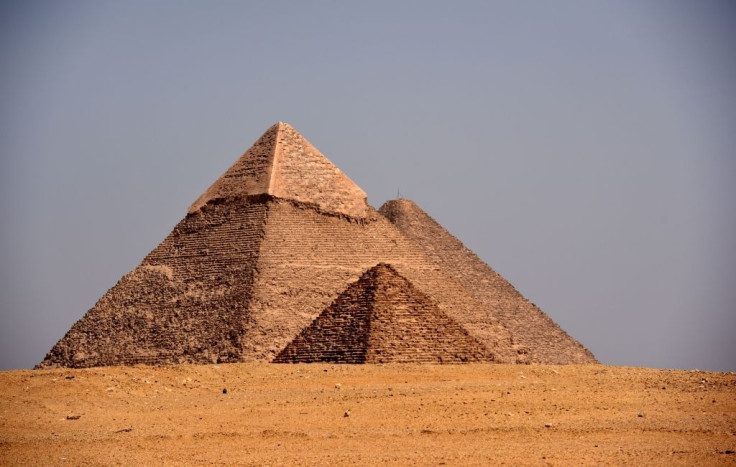Great Pyramid of Giza: Is there an iron throne made of meteorites in newly discovered void?
Professor points to ancient Pyramid Texts to back theory of pharaoh's hidden throne.
The announcement last November of the discovery of a mysterious void hidden deep inside the Great Pyramid of Giza has prompted an Italian professor to suggest it may house an iron throne built of metal from outer space.
Researchers have used non-invasive scanning techniques to peer inside the pyramid and reveal its hidden internal structure but they have been puzzled by the function of the hidden void.
Now, Giulio Magli, a professor of archaeoastronomy at the Politecnico di Milano, has proposed one of the first hypotheses for what lies inside the mysterious space.
He has suggested that it may hide an iron throne made from metal harvested from meteorites.
His findings are outlined in a pre-print online journal arXiv.org. They have not been peer-reviewed.
The pyramid, which was built around 2560 BC during the reign of Pharaoh Khufu, "is one of the largest and most complex monuments in the history of architecture," said Magli. As an archaeoastronomist he studies how ancient peoples understood the sky and what role it played in their culture.
Magli argued that it was unlikely that the void was the result of sloppy building, as some have suggested. The extreme care exhibited in the pyramid's design goes against that theory, he explained.
"Further, the void cannot be interpreted – as proposed by some Egyptologists - as a chamber devoted to relieve weight from the roof of the Great Gallery.
There must be a solid reason for the void's existence, and this reason must be deeply connected with the Egyptian funerary religion
"In other words, the newly discovered space is certainly a chamber or a system of chambers," he said.
"All in all, if the void cannot be attributed either to chance or to structural reasons, its presence must be functional to the scope of the pyramid: the tomb of the Pharaoh, built to assure its eternal afterlife.
"Thus, there must be a solid reason for its existence, and this reason must be deeply connected with the Egyptian funerary religion, which says that the pharaoh's afterlife lay among the stars."

Gates to the sky
One highly speculative explanation for this, according to Magli, lies in the Ancient Egyptian funerary religion outlined in the so-called Pyramid Texts. It is written in these religious tracts that once dead, "the pharaoh, before reaching the stars of the north, will have to pass the gates of the sky and sit on his throne of iron.
Within the pyramid, there are four narrow shafts which all point towards the stars. Two of these open out on to the facades of the monument, while the other two end at small, mysterious doors. The south-facing door has been investigated numerous times, with little success, while the north-facing door is still sealed.
Magli said that these doors were the "gates of the sky" mentioned in the Pyramid Texts and that the north-facing door might well lead into the newly discovered void, within which there will be a throne.
According to what we know of the throne of Khufu's mother, Queen Hetepheres, this throne may be made of wood but covered in sheets of metal. The reference in the Pyramid Texts suggests this metal could be iron.
Iron harvested from meteorites
Researchers know that the Egyptians produced valuable objects from rare iron harvested from meteorites - for example King Tutankhamun's dagger - centuries before Iron Age metalworkers learned how to smelt iron from the Earth's crust.
Magli said his hypothesis could be proven if the unexplored northern shaft was investigated to see if it leads into a room inside the big void.
The void is at least 30 metres long and is situated above the Grand Gallery – a steeply slanted passageway which connects two other chambers, the Queen's Chamber and the King's Chamber.
At 146 metres high, the pyramid was the tallest building in the world until the 19th Century, and is still one of the largest man-made structures on the planet.





















